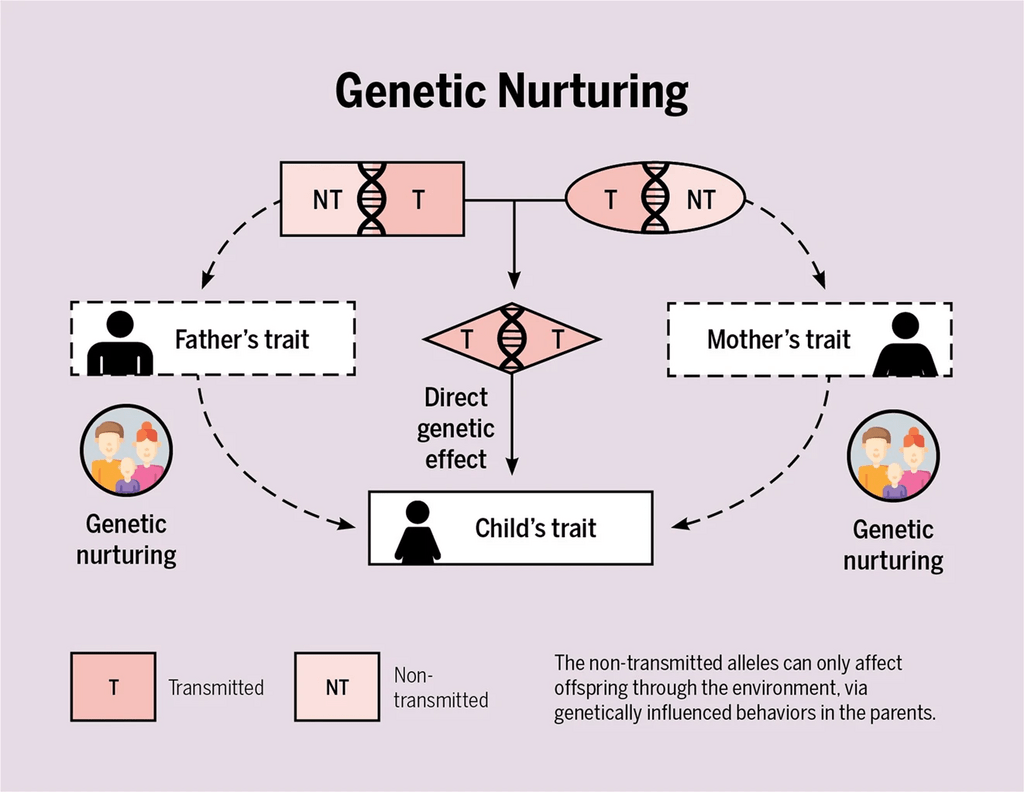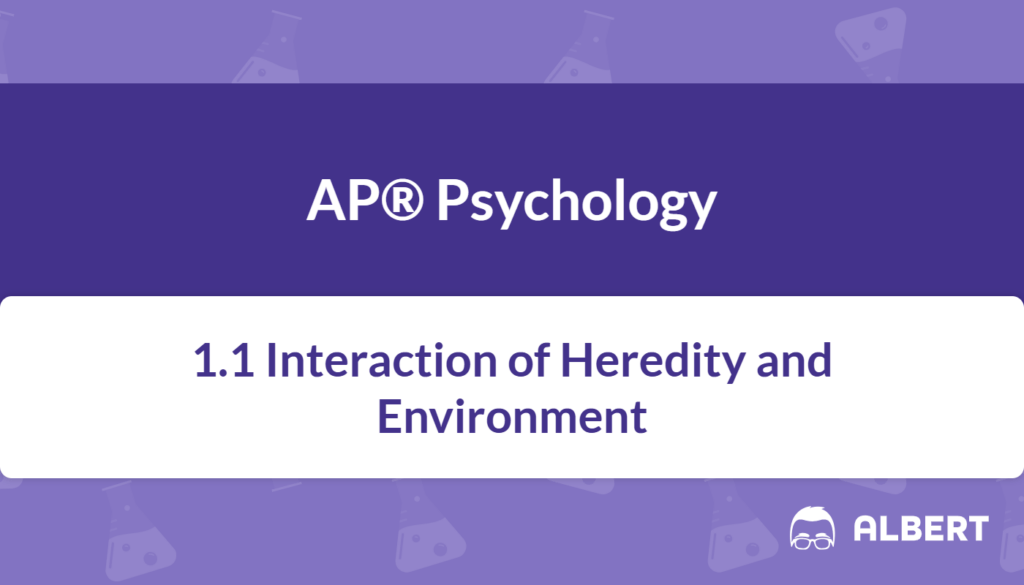What We Review
Introduction
Nature versus nurture is a classic debate in psychology. It focuses on whether inherited traits (nature) or life experiences (nurture) have a bigger influence on behavior and mental processes. The nature vs nurture discussion has evolved over time, and most experts now agree that both heredity (genetics) and environment (external factors) are essential in shaping who people become. Therefore, understanding the interaction between heredity and environment is crucial for anyone studying human behavior and mental processes.
This article explores how nature and nurture come together to influence traits. It also looks at how researchers study this interplay, using examples that can apply to everyday life. In addition, practical implications will illustrate why a balanced approach to this debate is important for psychology and related fields.
Defining Heredity and Environment
Heredity (Nature)
Heredity refers to traits passed down genetically from one generation to the next. It determines many physical characteristics, such as eye color and height. However, it also includes predispositions that may affect behavior and mental processes. The term “nature genetics” highlights how genes may shape tendencies like temperament or the likelihood of certain disorders.
Example – Musical Ability Tendency
- A family has a strong musical heritage, with multiple members excelling at instruments.
- Genetic predispositions may lead to natural talent in younger relatives.
- Each child might inherit traits that support better motor coordination or pitch recognition.
- This does not guarantee that every child will become a musician, yet it increases the possibility due to nature.

Environment (Nurture)
Environment refers to external or “nurture” factors that shape behaviors, beliefs, and emotional development. These factors can include family upbringing, cultural influence, education, and peer interactions. In other words, to “define nurture,” one can think of all the external conditions and experiences that affect individual growth.
Example – Childhood Reading Environment
- Consider two siblings who share the same biological parents.
- One sibling is provided an abundance of books and daily reading sessions with a caregiver.
- The other sibling has limited reading materials and no regular reading routines.
- Over time, the first sibling develops more advanced language skills, demonstrating the impact of nurture.
The Interaction Between Heredity and Environment
Although heredity sets certain potentials, environment can either strengthen or weaken how these potentials express themselves. Therefore, most traits are the result of an ongoing interplay between genetic predispositions and outside influences.
Example – Athletic Potential and Training
- Assume a teenager has a genetic advantage for endurance running (e.g., a favorable height ratio).
- However, if that teenager never receives proper training, the athletic talent may not fully develop.
- In contrast, another teen with moderate genetic potential who trains regularly might excel more.
- Thus, the combination of inherited traits and environmental dedication leads to top athletic performance.
Step-by-Step Breakdown of This Example:
- Identify the genetic factor: The teen’s natural advantage for endurance.
- Identify the external factor: A training program (or lack thereof).
- Observe the outcome: Despite genetics, training is necessary to fulfill athletic potential.
- Conclude: Both nature and nurture must interact for maximum development.
The Evolutionary Perspective
The evolutionary perspective suggests that behaviors and mental processes evolve over time through natural selection. Traits that increase chances of survival and reproduction become more common across generations. Therefore, it is believed that certain fears, preferences, or social tendencies originated because they helped ancestors adapt to their environment.
Example – Fear of Snakes
- In ancient environments, avoiding venomous snakes was vital for survival.
- Individuals who instinctively feared snakes may have been less likely to be bitten.
- Over many generations, this fear could have been passed along more frequently.
Step-by-Step Application:
- Identify the behavioral trait: Fear of snakes.
- Connect to survival advantage: Fearing snakes helps individuals avoid danger.
- Explain evolutionary transmission: Those who survived passed on their genes.
- Conclude: Modern fear responses can be partially explained by inherited survival mechanisms.
However, it is essential to remember that some theorists have misused evolutionary ideas for discriminatory practices, such as eugenics. This perspective is best used with sensitivity to cultural and ethical considerations.
Research Methods in Understanding Heredity and Environment
Researchers use specific techniques to tease apart the relative contributions of nature and nurture. These methods include twin studies, family studies, and adoption studies. By comparing similarities and differences in genetically related or unrelated individuals, scientists gain insights into how much of a trait is inherited versus influenced by upbringing.
Twin Studies
- Researchers compare identical twins (who share almost all the same genes) and fraternal twins (who share about half) raised together or apart.
- If identical twins raised in different environments show the same traits, heredity is likely significant. However, environmental factors still play a role.
Family Studies
- Characteristics in families are observed across multiple generations.
- This method can highlight patterns of certain behaviors or conditions that appear frequently, suggesting a genetic link.
Adoption Studies
- Children who are not raised by their biological parents allow researchers to explore how environment influences traits in the absence of a close genetic connection.
- Similarities between adopted children and adoptive parents may point to environmental influences.
Step-by-Step Example – Comparing Identical Twins
- Identify a pair of identical twins.
- Gather data on traits such as personality or academic performance.
- Compare the results of each twin’s environment, such as different schools or extracurricular activities.
- Determine whether similarities persist, suggesting a strong genetic influence, or if differences are pronounced, indicating environmental impact.
Case Study Examples
Example 1: Identical Twins Raised Apart
- Two identical twins are separated at birth.
- Twin A grows up in a city with unrestricted access to technology, while Twin B is raised in a rural setting with limited resources.
- Over time, Twin A develops strong digital literacy skills, and Twin B excels at hands-on problem-solving.
- Despite these differences, both exhibit a strikingly similar sense of humor and preferences in music.
Step-by-Step Analysis:
- Step 1: Identify the nature aspect – the twins’ matching genetic makeup.
- Step 2: Identify the nurture aspect – the vastly different living environments.
- Step 3: Examine similarities (music taste, sense of humor) as likely influenced by genes.
- Step 4: Examine differences (technical vs. practical skills) as influenced by environmental factors.
Example 2: Environmental Case Study of Educational Impact
- A student with an average genetic capacity for math is enrolled in an intensive tutoring program.
- Frequent practice and support build more confidence and competence in problem-solving.
- Another student, also with an average math background but no extra tutoring, progresses at a slower rate.
- Both display similar overall intelligence but differ significantly in math test results.
Step-by-Step Analysis:
- Step 1: Identify the nature aspect – comparable innate math potential.
- Step 2: Identify the nurture aspect – an intensive tutoring environment for one student.
- Step 3: Observe the outcome – improved math skills due to extra practice and guidance.
- Step 4: Conclude that educational environment can alter and enhance performance, showing the power of nurture.
Practical Implications of Nature vs. Nurture
A balanced view of heredity and environment has several real-world applications. Educators can recognize that students arrive with different genetic potentials but still benefit strongly from a supportive classroom. Parents also realize that certain behaviors might come from innate tendencies, yet loving guidance can shape those traits in positive ways. Therefore, understanding the nature-nurture interaction helps experts create effective strategies for personal development and growth.
Quick Reference Chart: Key Vocabulary
Below is a simple table that defines essential terms related to heredity and environment.
| Term | Definition |
| Heredity | Inherited characteristics passed from parent to offspring through genes. |
| Environment | External factors (family, culture, experiences) that influence behavior and mental processes. |
| Nature | Another way to describe genetic influences on behavior. |
| Nurture | Another term for the impact of outside experiences on behavior. |
| Twin Studies | Research method comparing identical and fraternal twins to determine genetic influence. |
| Adoption Studies | Research comparing adopted children with both biological and adoptive families to see how environment impacts traits. |
| Evolutionary Perspective | A viewpoint suggesting that behaviors and traits have adapted over generations for survival. |
| Natural Selection | Process through which beneficial traits become more common over time. |
Conclusion
Heredity, or “nature,” and environment, or “nurture,” both contribute to the development of behavior and mental processes. Instead of competing with one another, these two forces work together in guiding physical, emotional, and cognitive outcomes. Therefore, it is helpful to maintain a balanced perspective and recognize the interplay between genetic and environmental factors.
Research methods, such as twin studies or adoption studies, highlight the power of scientific approaches in understanding complex traits. In addition, the evolutionary perspective emphasizes how certain responses trace back to ancestral environments. By exploring these concepts, learners can appreciate how genes set the stage while environmental experiences direct the performance.
Sharpen Your Skills for AP® Psychology
Are you preparing for the AP® Psychology test? We’ve got you covered! Try our review articles designed to help you confidently tackle real-world AP® Psychology problems. You’ll find everything you need to succeed, from quick tips to detailed strategies. Start exploring now!
- Parts of the Nervous System: AP® Psychology Review
- Neuron Activation: AP® Psychology Review
- Parts of the Brain and What They Do: AP® Psychology Review
Need help preparing for your AP® Psychology exam?
Albert has hundreds of AP® Psychology practice questions, free response, and full-length practice tests to try out.








